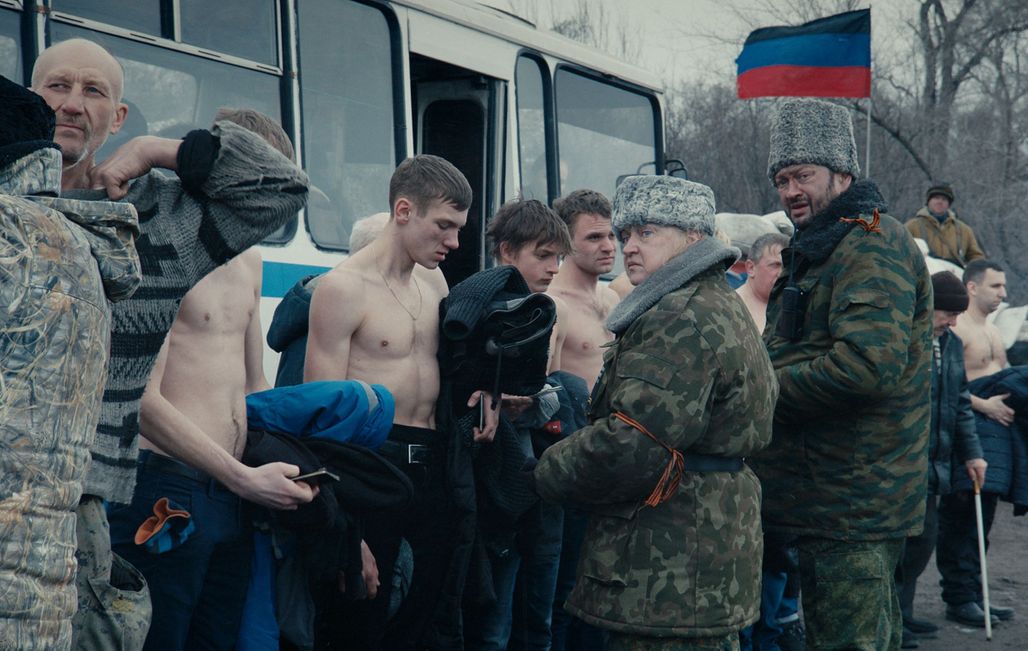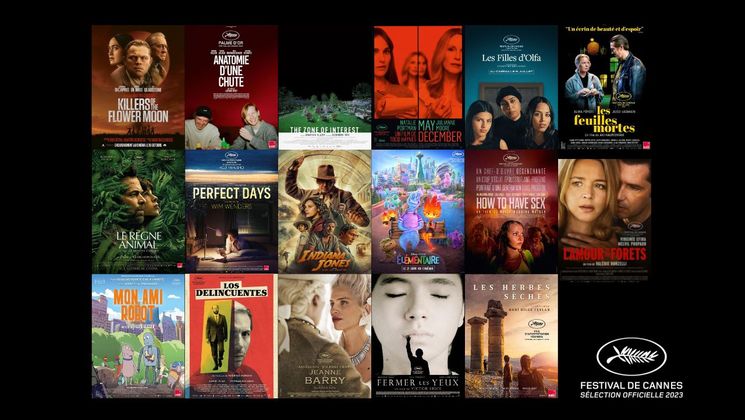
Donbass as seen by Sergei Loznitsa

The Ukrainian-born director Sergei Loznitsa enjoys playing with the documentary genre. Following Krotkaya (A Gentle Creature), shown In Competition in 2017, his sixth feature film in the Official Selection recreates the war in Donbass using amateur war videos.
What inspired you to begin work on this film?
When the war in the Donbass broke out in 2014, I followed the events very closely. It soon it became obvious to me that one important source of information, apart from conventional ones, (professional news reports and articles, videos and photographs) was the amateur videos posted on the internet by numerous witnesses to and participants in these events. In many cases, they were more informative and substantial than professionally made war reportage. At some point I realised that I wanted to make a fictional film based on these real life materials. I wanted to recreate the events which took place in the Donbass in the form of a feature film. So I selected a dozen videos which I found the most striking and expressive, and wrote a script based on them. They included a wedding of a couple of separatist fighters, Bekha and Ghurza; a scene where a journalist pours a bucket of dirt on the head of a corrupt mayor and an episode at a maternity clinic, where the authorities are stealing humanitarian aid from the patients.
Please describe your working methods and the atmosphere on set. Anecdotes welcome!
We shot the film in the city of Krivoy Rog in Eastern Ukraine, one of Europe’s largest iron-ore mining centres. It lies some 300km from Donetsk, a major industrial city and the “capital” of one of the self-proclaimed separatist republics. I chose Krivoy Rog because its landscape, industrial architecture and population are somewhat similar to Donetsk.
I came to Krivoy Rog with my wonderful crew, who are from all over Eastern Europe. My director of photography is from Romania, my production designer is from Russia, my costume designer is from Poland, my sound designer is from Belarus, my editor is from Lithuania and my first assistant director (1AD) is from Poland. I also brought a Latvian line producer and production coordinator. All of us have been working together for many years; there’s trust and a great creative atmosphere on the set, which I find essential. The shooting conditions were very tough, mainly because the local infrastructure is severely underdeveloped and the local work ethic is somewhat different to what I’m used to. Nevertheless, we managed to overcome all the obstacles, including local bureaucracy, and we managed to shoot the film in 31 days.
We shot in the winter, so we had to cope with some pretty tough weather conditions. The temperature dropped down to minus 15 degrees in January and February. In March, after all the snow seemed to have gone, it suddenly started falling again, right at the moment when we were shooting the scene at the bus stop, where passers-by are abusing and beating up a Ukrainian soldier tied up to a lamppost. We were supposed to shoot this scene for three days in the middle of March. We started shooting when all the snow had melted and the pavements were clear of snow. All of a sudden, on the night between the second and the third shooting days, it started snowing very heavily. My 1AD and my line producer were on the phone to me at 5 o’clock in the morning, telling me that with the snow clearing equipment they had available at that point, it would not be possible to clear the location on time. So, we had to postpone the shoot, the line producer called around the city in search of proper snow removal machines and then he spent the next 24 hours on location, supervising a massive snow cleaning operation, which involved a large city square and an adjacent street. Most of the actors managed to rearrange their schedules, and in the end we shot the third day in almost perfect, snow free conditions. Nobody would ever know how much effort went into re-creating that dull, grey, early spring cityscape.
Tell us about your actors.
I worked with professional actors, as well as with local talents who we found in Krivoy Rog. In terms of professionals, I invited several actors from Yekaterinburg’s Kolyada Theatre: Sergei Kolesov (he is in all my feature films), Svetlana Kolesova, Irina Plesnyaeva, Konstantin Itunin and Evgeny Chistyakov. They are a sheer joy to work with: disciplined, dedicated and fearless. I also invited Boris Kamorzin from Moscow, who also acted in all my previous films. He is a great talent with huge charisma, able to create a strong and memorable character even during a couple of minutes of screen presence. I worked with wonderful actors from Ukraine – Liudmila Smorodina, Olesya Zhurakovskaya, Petr Panchuk, Natalia Buzko, Georgy Deliev. It’s fascinating to work with actors from different backgrounds and different schools. It contributes greatly to the energy of the film.
Sometimes, it’s quite a challenge to mix professionals and non-professionals in a scene. However, I am happy with the result we achieved.
What sources of artistic inspiration have you drawn from in your work?
My goal was to translate amateur videos into a work of fiction. I also wanted to show how much the omnipresence of a TV camera influences and distorts our behaviour. In order to deconstruct the style of TV reportage, one needs to study it very carefully. So, I watched a lot of TV news programmes: Russian, Ukrainian and those produced in the self-proclaimed republics in the East of Ukraine. I found it very fascinating and, in some cases, comic.
What are your views on the state of the film industry in your country?
I’m frequently asked which country I consider to be “my country”… However, if the question is about the Ukrainian film industry, it seems to me that in the recent few years, state support for cinema has grown significantly. It means that there are more films produced in Ukraine than in the previous years. However, quantity does not mean quality. I think the country still lacks decent educational institutions in general and, in particular, decent film schools. Until they start working on teaching young people about cinema, its history, the way the industry works, how to organise shooting process, how to work with actors, etc., I fear that a lot of the money they pour into new projects will be simply wasted.
Can you tell us about your next project?
I intend to begin preparations for Babi Yar, a feature film about the events which took place in Ukraine in 1941. If all goes well, we’ll shoot the film in the summer of 2019.


